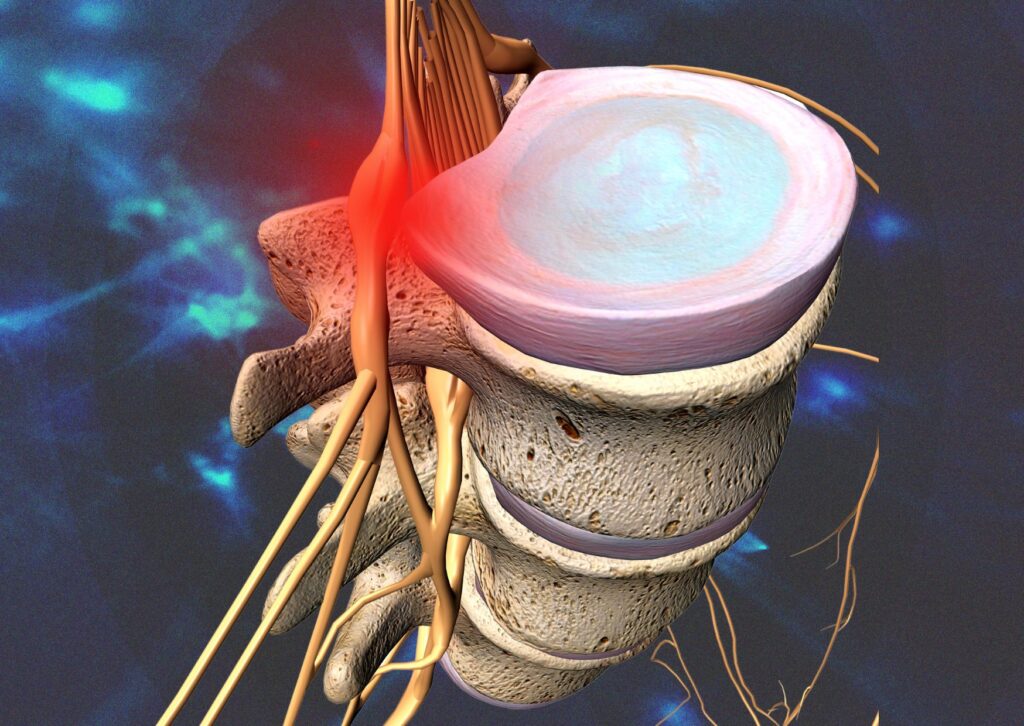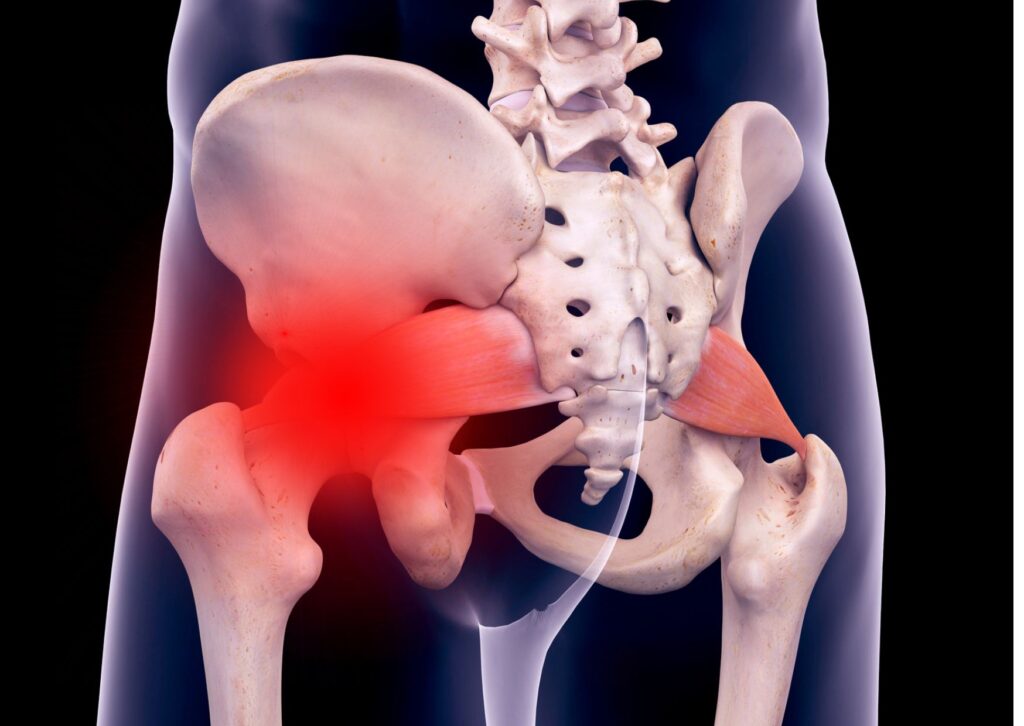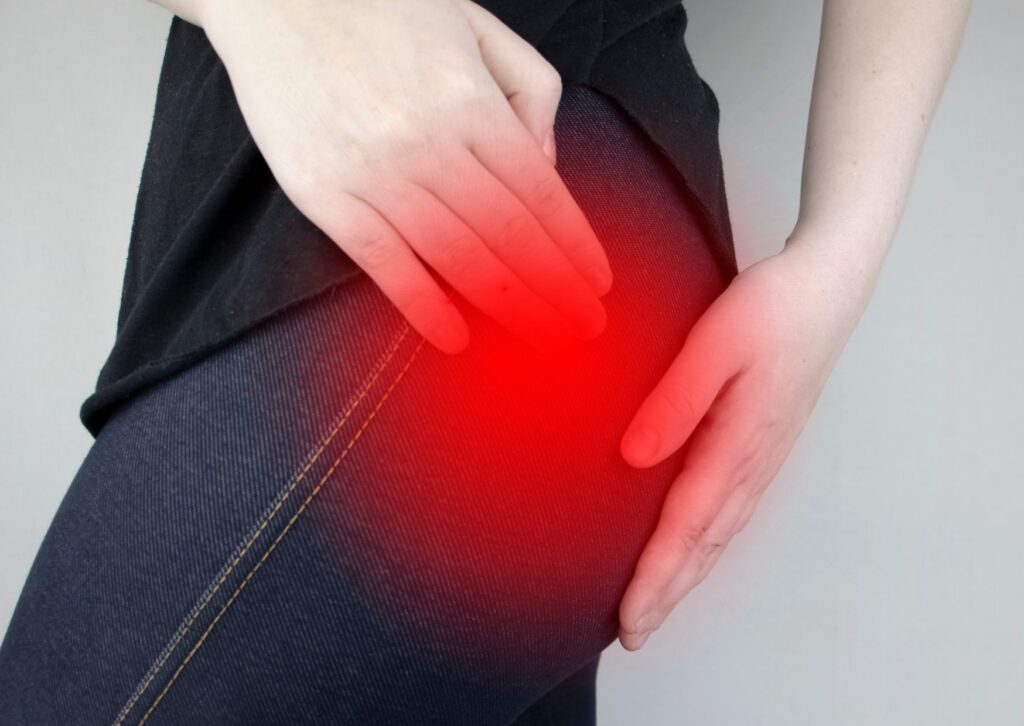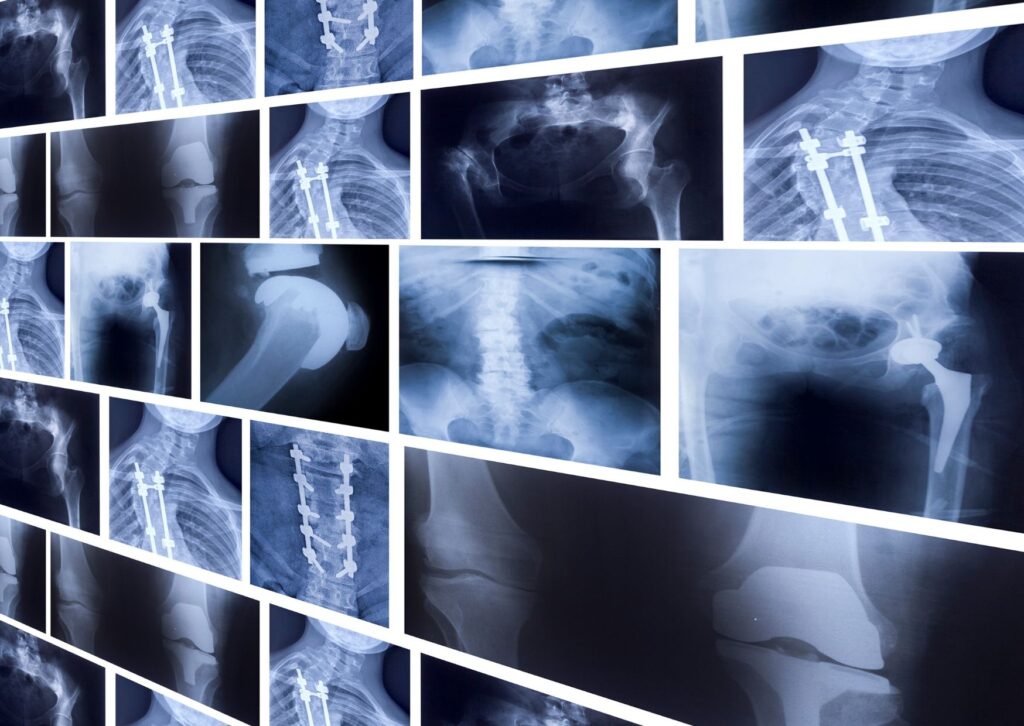Sciatica | What You Need To Know
What is Sciatica?
Sciatica is a type of pain that develops when the sciatic nerve is irritated or compressed.
The sciatic nerve is the longest nerve in the human body.
It travels through t he lower back, buttocks, and legs.
This is where individuals with sciatica may experience discomfort, numbness, and tingling as a result of it.
The pain can range from mild to severe and may be worse when sitting or standing for long periods of time.
Sciatica is often caused by a herniated disc in the lower spine, but can also be caused by other conditions such as spinal stenosis, piriformis syndrome, muscular restriction around the nerve and or spinal tumors.
Treatment for sciatica may include pain medication, physical therapy, and in some cases, surgery.
What Triggers Sciatica?
There are several common triggers of sciatica, including:
Herniated disc
A herniated disc occurs when the soft center of a spinal disc pushes through a crack in the outer ring, which can then press on the sciatic nerve and cause pain.

Spinal stenosis
This condition occurs when the spaces within the spine narrow, which can then put pressure on the sciatic nerve.
Piriformis syndrome
This condition occurs when the piriformis muscle, which is located in the buttocks, becomes tight or inflamed and puts pressure on the sciatic nerve.

Spinal tumors
Tumors that form on the spine can also press on the sciatic nerve and cause pain.
Other factors that contribute to the development of sciatica include obesity, poor posture, and activities that involve repetitive movements or prolonged periods of sitting or standing.
What is the Fastest Way to Cure Sciatica?
The fastest way to alleviate the pain and discomfort caused by sciatica can vary depending on the underlying cause and the severity of the condition.
Some common treatment options for sciatica include:
Pain Medication
Although medication is unlikely to cure sciatica, over-the-counter or prescription pain medication can help to reduce inflammation and alleviate pain.
Hot and Cold Therapy
Alternating between hot and cold compresses can help to reduce inflammation and alleviate pain.
Cold therapy can be used to reduce inflammation and numb the affected area, which can help to reduce pain.
Ice packs or cold compresses are a great way to apply cold therapy.
However, It’s important to avoid applying cold therapy directly to the skin.
Instead, wrap the ice pack in a thin towel or cloth before applying it to the affected area.
10 minute intervals are usually the recommended amount of time for cold therapy treatments.

Heat therapy is often used to relax tight muscles and improve circulation, which can help to alleviate pain.
Hot water bottles, warm compresses and hot baths are a great way to achieve this.
It’s important to use caution when applying heat therapy, as applying heat to the skin for too long can cause burns.
Generally, it is recommended to alternate between hot and cold therapy to reduce pain and inflammation caused by sciatica.
Physical Therapy
A physical therapist can provide you with stretches and exercises to help strengthen the muscles that impact the sciatic nerve. This can help to reduce the pressure of sciatica.
Physical therapy sessions will not only give you the methods to reduce your pain, but will provide you with the accountability to ensure you keep doing them.
A good physical therapist will set you homework that helps you implement the stretches and exercises that will reduce your pain.
Massage
Massage therapy can help to relax tight muscles, and if the sciatica is being caused by this, it can help to alleviate pressure and pain.
There are a range of different massage that may help, including, sports massage, remedial massage, deep tissue massage and more.
A competent massage therapist will work with you to reduce the tightness in the muscles, that may be causing your sciatica.

In extreme cases of sciatica, surgery may be necessary to address the underlying cause.
Medical professionals typically only recommend this for severe or persistent cases that do not respond to other treatment methods.
It’s important to consult with a doctor or medical professional to determine the most appropriate treatment plan for your specific case.
How Do You Know If You Have Sciatica?
There are several common signs and symptoms of sciatica, which may include:
Pain in the lower back, buttocks, and legs
The sciatic nerve runs through the lower back, buttocks and legs. Therefore pain in these areas can be a sign that you may be suffering with this condition.
The pain can range from mild to severe and may be worse when sitting or standing for long periods of time.

Numbness or tingling in the legs
Sciatica can cause a sensation of pins and needles or numbness in the legs.
This numbness can be constant or intermittent, but if this is a symptom you’re experiencing then you should consult your doctor.
Weakness in the legs
Some people with sciatica may experience weakness in the legs or difficulty moving them.
If you feel a continuous or intermittent loss of power and strength in one leg this may be sciatica
Difficulty standing or sitting
Sciatica pain may be worse when standing or sitting for long periods of time, and some people may have difficulty standing up straight or sitting down due to discomfort.
If any of the symptoms above accompany difficulty sitting or standing, then it is a sign you may be experiencing sciatica.

A shooting pain that radiates down one leg
The pain may feel like a shooting or stabbing sensation that radiates down the leg.
The pain is usually on one side but in some cases it can present itself on both sides.
To seek a proper diagnosis, it is important to consult with a doctor or medical professional if you’re experiencing any of these symptoms.
A professional can determine the underlying cause of your symptoms and recommend appropriate treatment options.
What Does Sciatica Pain Feel Like?
The intensity and sensation of sciatica pain can vary, but people generally describe it as a shooting or stabbing pain that radiates down the leg.
The pain may be constant or intermittent, and it may be worse when sitting or standing for long periods of time.
Some people with sciatica may also experience numbness, tingling, or a sensation of pins and needles in the legs.
The severity of the pain can vary widely among individuals, with some people experiencing mild discomfort and others experiencing severe pain that interferes with daily activities.
In general, the pain of sciatica tends to be more severe than the pain caused by other types of back problems.
If you are experiencing pain that you suspect may be sciatica, consult with your doctor.
Does Walking Help Sciatica?
Walking can be an effective way to help alleviate the pain and discomfort caused by sciatica in some cases.
Walking can help to stretch and strengthen the muscles in the back and legs, which may help to reduce pressure on the sciatic nerve and improve symptoms.

Additionally, walking helps to enhance circulation and aid in the healing process.
However, it’s important to avoid strenuous activities or exercises that may make the pain worse.
It may be helpful to start with short walks and gradually increase the distance as your symptoms improve.
It’s also a good idea to consult with a doctor or physical therapist before starting any new exercise program, as they can provide guidance on the most appropriate activities.
This can help you to avoid any potentially harmful movements.
Does Drinking Water Help Sciatica?
Drinking water is not a specific recommendation to relieve sciatic pain.
However, proper hydration can help to reduce inflammation and flush toxins from the body, which may help to improve symptoms.
To stay hydrated, 2 litres of water is generally the recommendation.
It’s important to note that while drinking water may help to improve symptoms, it is not a cure for sciatica and should be used in conjunction with other treatment methods as recommended by a medical professional.
Will an X-Ray Show Sciatica?
An x-ray can sometimes show abnormalities in the spine or other structures that may be causing sciatica, but it is not always able to clearly see the sciatic nerve itself.
If Sciatica is being caused by a herniated disk, then an x-ray will be able to show the herniated disk, even if it can’t see the sciatic nerve.
Other imaging tests such as MRI or CT scans are more effective ways of identifying the specific cause of sciatica.

Will Muscle Relaxers Help Sciatica Pain?
In some cases, muscle relaxers may be helpful in reducing the pain and discomfort caused by sciatica.
Muscle relaxers are a type of medication that work to relax the muscles and reduce muscle spasms.
If the sciatica is being caused by tight muscles, this can help to alleviate pain.
Muscle relaxers are not a cure for sciatica and are typically only used to help manage the pain on a short-term basis.
Medical professionals may recommend using them as part of a treatment plan that may also include physical therapy, specific exercises, or massage.
It’s important to consult with a doctor before taking muscle relaxers or any other medication, as they can help you to determine the most appropriate treatment plan for your specific case.
Will Vitamins help with Sciatica?
Certain vitamins and supplements may help to reduce inflammation and improve symptoms of sciatica.
For example, vitamin D and calcium may help to strengthen bones and improve muscle function, while omega-3 fatty acids may help to reduce inflammation.
It’s important to remember that vitamins and supplements are not a cure for sciatica and should not be used as a replacement for conventional treatment methods.
It’s always a good idea to consult with a doctor or health specialist before taking any vitamins or supplements.

Is Sciatica A Form of Arthritis?
Arthritis and Sciatica are not the same.
Sciatica is a type of pain that develops when the sciatic nerve is irritated or compressed.
On the other hand, Arthritis is described as inflammation of the joints which causes pain, stiffness, and swelling
The most common of which are osteoarthritis and rheumatoid arthritis.
Osteoarthritis is a degenerative joint disease that occurs when the cartilage between the joints wears down, causing the bones to rub together and causing pain and stiffness.
Rheumatoid arthritis is an autoimmune disease that occurs when the immune system attacks the joints, causing inflammation and joint damage.
Both types of arthritis can cause joint swelling, stiffness, and difficulty with daily activities such as walking and gripping objects.
However, they are both different conditions to sciatica.
Author
Tyler Lowe – Health and Wellbeing Speaker
BSc Sport and Exercise Rehabilitation


